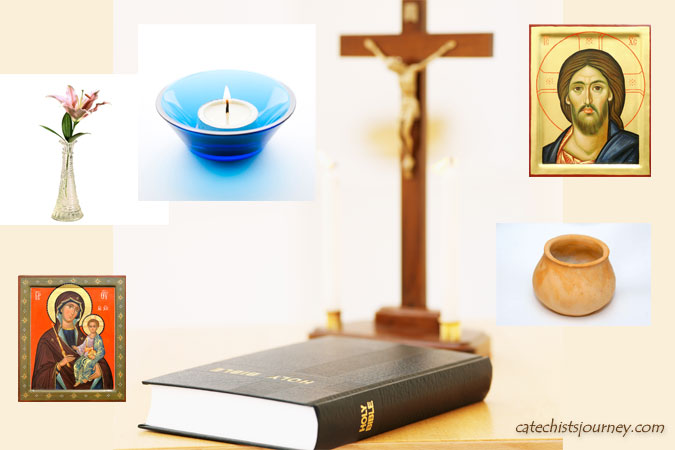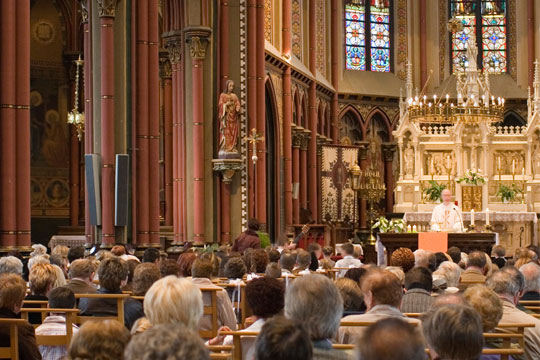
This is the third article in a series about liturgical catechesis.
One of the treasures of liturgical prayer is that it is physical and sensory in nature, filled with sights of seasonal colors and sacramental symbols: the smells of incense and chrism, the sounds of words and music. When we include these in our catechetical sessions, we let children know they are not entering mere school classrooms; they are entering sacred spaces where faith is shared.
While you may not be able to include the “smells” of our faith—incense is certainly not practical in a classroom—every catechist can include some “bells.” Your catechetical space needs a prayer table draped in fabric the color of the liturgical season, enhanced with both natural and manmade objects. The liturgical catechist should collect prayer “props” for this purpose. Your parish might have a collection of prayer props for catechists to use.
As you build your collection, remember to keep the size of objects appropriate to your space. Be sure these things do not look cheap or minimal. Our worship environment, even when small, should reflect the best we can offer. That doesn’t mean including only the most expensive objects in your collection; rather, the best objects are those whose quality is based on their intrinsic beauty and meaning.
Collecting objects for a prayer table means keeping an eye out when you are out in nature or shopping. You can actually find great objects inexpensively at big-box stores, garage sales, and thrift stores. (One of my favorite crucifixes was a “rescue” from a thrift store.) You can also ask parents to donate items or enlist children’s help to find natural objects.
Here are some things to include on your liturgical catechist’s shopping list:
- Fabric or placemats/table runners in liturgical seasonal colors (patterned or plain)
- Crucifix that stands up
- Candles (flameless candles are a safer alternative, especially if you have fire-code restrictions)
- Bible (hardcover, not paperback)
- Olive oil (for talking about sacraments)
- Bowls (glass or good clear plastic) for water or oil
- Pottery bowls (for ashes, leaves, stones, shells, or other objects)
- Small vases
- Book stand for a Bible or something wedge-shaped to elevate it
- Art prints or original art
- Small Advent wreath and candles
- Pottery chalice and plate (use vessels that you imagine a simple carpenter would have used)
- Catholic music CDs (traditional chant, contemporary, instrumental, etc.)
- Bell (for call to prayer)
Nature freely offers objects you could include in your collection:
- Small rocks
- Seashells
- Autumn leaves (in season)
- Pine cones (for fall or winter displays)
- Bare twigs (for a Jesse Tree or to display in a simple vase during Lent)
- Wildflowers or garden flowers (for Easter Season)
If you share space with a schoolteacher or another catechist, you will have to set up and take down your prayer area. Use a catechist supply box or permanent storage space for these items. Otherwise, pack what you need in your catechist’s bag and bring it with you. (A small wheeled suitcase is a great way to transport all your props, as well as your catechist’s manual and other materials.)
The effort you expend curating a good collection of props for your prayer table will bring the liturgical seasons into your classroom and allow students to make connections to the liturgy and begin to love the liturgical year.
What props do you include in your prayer space? What are the “smells and bells” of your classroom?
Read the first two articles in the series:
Why Become a Liturgical Catechist?
Sights, Sounds, and Movements: Connecting the Liturgy to the Classroom




Be the first to comment